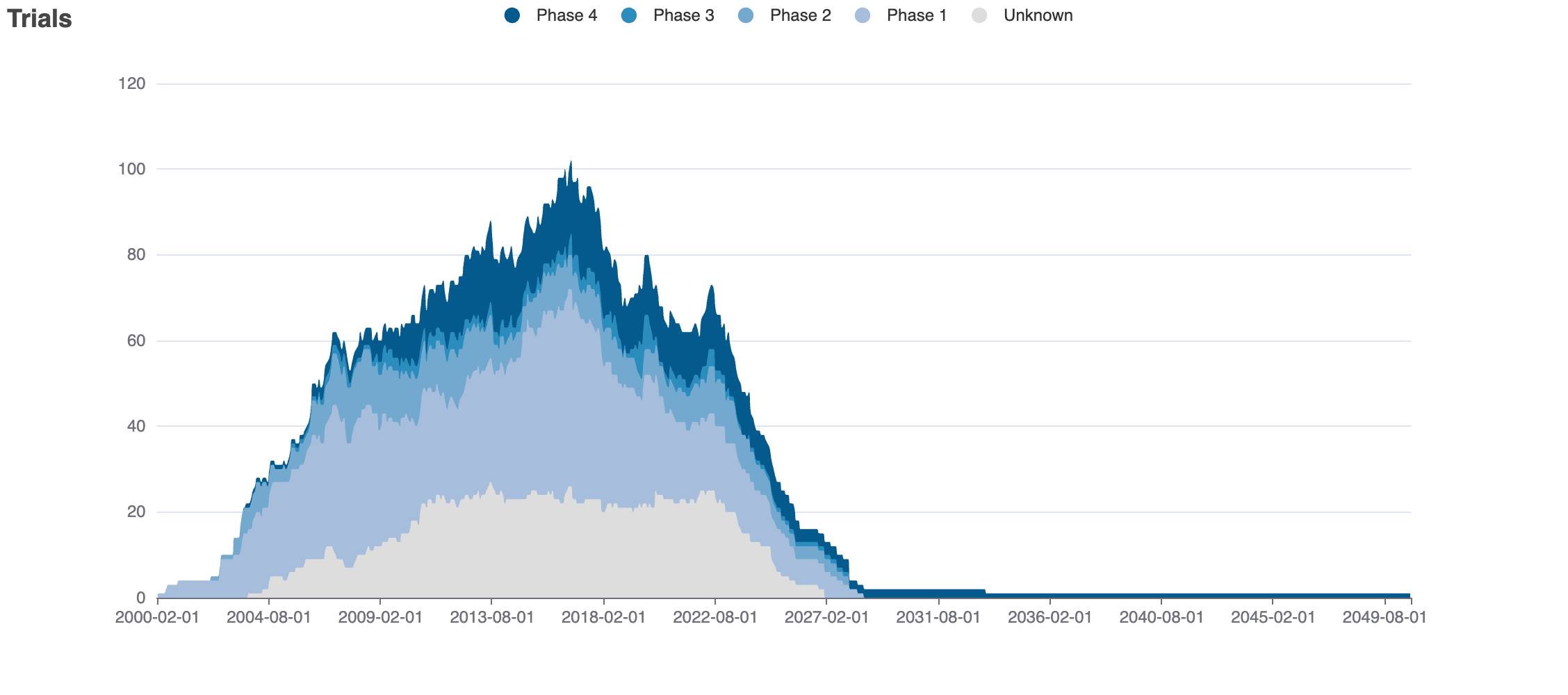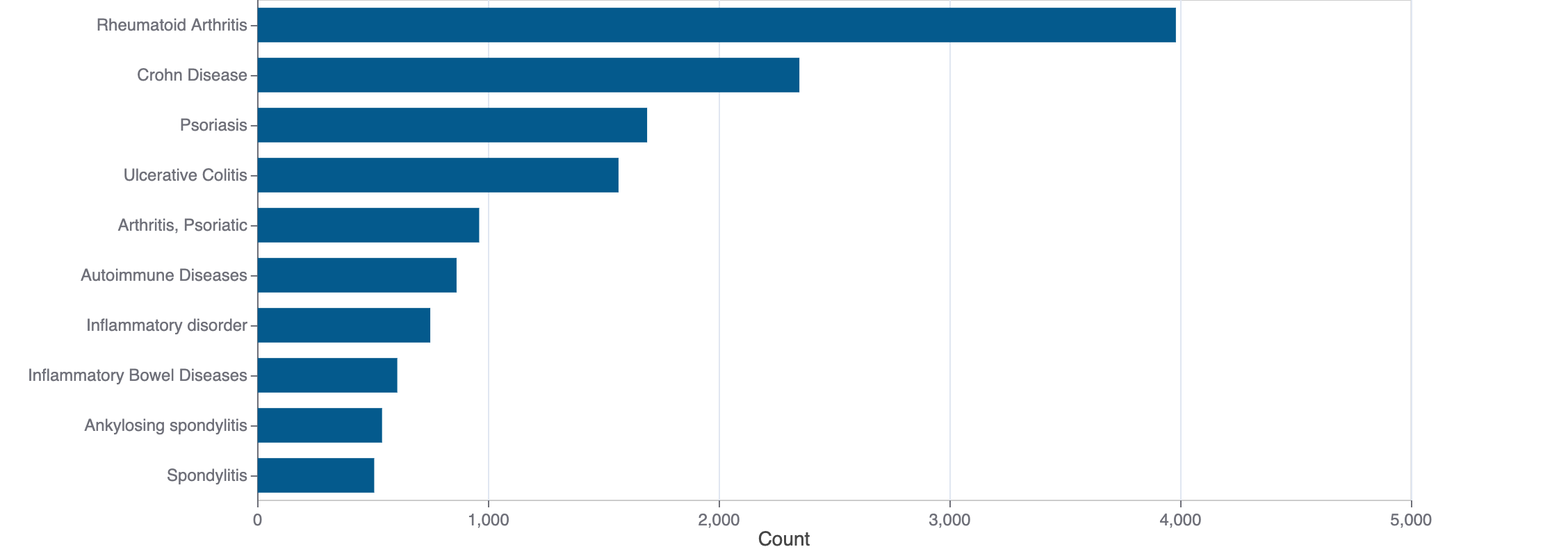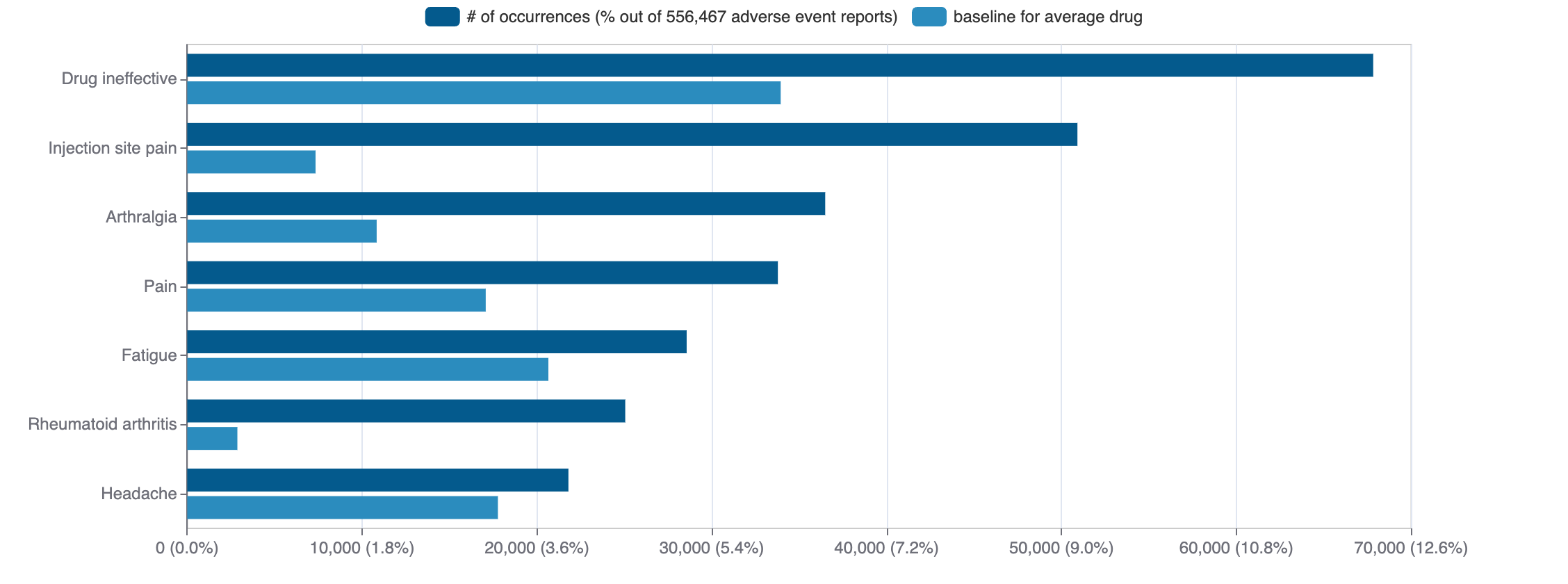Ditropan, Kentera (previously oxybutynin nicobrand)(oxybutynin)
Ditropan, Gelnique, Kentera, Oxytrol (oxybutynin) is a small molecule pharmaceutical. Oxybutynin was first approved as Ditropan on 1982-01-01. It is used to treat dysuria, neurogenic urinary bladder, and urinary incontinence in the USA. It has been approved in Europe to treat urge urinary incontinence. The pharmaceutical is active against muscarinic acetylcholine receptor M1 and muscarinic acetylcholine receptor M3. In addition, it is known to target muscarinic acetylcholine receptor M4, muscarinic acetylcholine receptor M2, and muscarinic acetylcholine receptor M5.
Download report
Favorite
Top OTC Drugs
Commercial
Therapeutic Areas
Therapeutic Area | MeSH |
|---|---|
| nervous system diseases | D009422 |
| urogenital diseases | D000091642 |
| signs and symptoms pathological conditions | D013568 |
Trade Name
FDA
EMA
Ditropan, Gelnique, Oxytrol (generic drugs available since 1988-11-14, discontinued: Gelnique)
Drug Products
FDA
EMA
New Drug Application (NDA)
New Drug Application (NDA)
Abbreviated New Drug Application (ANDA)
Abbreviated New Drug Application (ANDA)
Oxybutynin
Labels
FDA
EMA
Brand Name | Status | Last Update |
|---|---|---|
| ditropan | New Drug Application | 2021-04-05 |
| gelnique | New Drug Application | 2019-03-22 |
| oxybutynin chloride | ANDA | 2023-06-09 |
| oxytrol for women | New Drug Application | 2016-08-13 |
Indications
FDA
EMA
Indication | Ontology | MeSH | ICD-10 |
|---|---|---|---|
| dysuria | EFO_0003901 | D053159 | R30 |
| neurogenic urinary bladder | HP_0000011 | D001750 | N31 |
| urinary incontinence | HP_0000020 | D014549 | R32 |
Agency Specific
FDA
EMA
No data
HCPCS
No data
Clinical
Clinical Trials
77 clinical trials
View more details

Mock data
Subscribe for the real data
Subscribe for the real data
Indications Phases 4
Indication | MeSH | Ontology | ICD-10 | Ph 1 | Ph 2 | Ph 3 | Ph 4 | Other | Total |
|---|---|---|---|---|---|---|---|---|---|
| Overactive urinary bladder | D053201 | EFO_1000781 | N32.81 | 1 | 1 | 6 | 8 | 4 | 20 |
| Hyperhidrosis | D006945 | HP_0000975 | — | 2 | 2 | 1 | 3 | 8 | |
| Urinary incontinence | D014549 | HP_0000020 | R32 | — | — | 3 | 3 | 1 | 7 |
| Neurogenic urinary bladder | D001750 | HP_0000011 | N31 | — | 1 | 3 | 2 | — | 6 |
| Urge urinary incontinence | D053202 | EFO_0006865 | N39.41 | — | 1 | 2 | 1 | — | 4 |
| Spinal cord injuries | D013119 | EFO_1001919 | — | 1 | — | 1 | 1 | 3 | |
| Cognition | D003071 | EFO_0003925 | — | — | — | 2 | — | 2 | |
| Cystitis | D003556 | EFO_1000025 | N30 | — | — | — | 1 | — | 1 |
| Multiple sclerosis | D009103 | EFO_0003885 | G35 | — | — | — | 1 | — | 1 |
| Spinal cord diseases | D013118 | HP_0002196 | G95.9 | — | — | — | 1 | — | 1 |
Show 2 more
Indications Phases 3
Indication | MeSH | Ontology | ICD-10 | Ph 1 | Ph 2 | Ph 3 | Ph 4 | Other | Total |
|---|---|---|---|---|---|---|---|---|---|
| Hot flashes | D019584 | — | 1 | 2 | — | — | 3 | ||
| Diabetic neuropathies | D003929 | EFO_1000783 | — | — | 1 | — | — | 1 | |
| Breast neoplasms | D001943 | EFO_0003869 | C50 | — | — | 1 | — | — | 1 |
| Ductal carcinoma breast | D018270 | — | — | 1 | — | — | 1 | ||
| Disease | D004194 | EFO_0000408 | R69 | — | — | 1 | — | — | 1 |
| Nocturnal enuresis | D053206 | N39.44 | — | — | 1 | — | — | 1 | |
| Urination disorders | D014555 | — | — | 1 | — | — | 1 |
Indications Phases 2
Indication | MeSH | Ontology | ICD-10 | Ph 1 | Ph 2 | Ph 3 | Ph 4 | Other | Total |
|---|---|---|---|---|---|---|---|---|---|
| Healthy volunteers/patients | — | 8 | 1 | — | — | — | 9 | ||
| Obstructive sleep apnea | D020181 | EFO_0003918 | G47.33 | 2 | 4 | — | — | — | 4 |
| Allergic rhinitis seasonal | D006255 | EFO_0003956 | J30 | — | 1 | — | — | — | 1 |
| Rhinorrhea | D000086722 | — | 1 | — | — | — | 1 | ||
| Cognitive dysfunction | D060825 | G31.84 | — | 1 | — | — | — | 1 | |
| Prostatic neoplasms | D011471 | C61 | — | 1 | — | — | — | 1 | |
| Male urogenital diseases | D052801 | — | 1 | — | — | — | 1 | ||
| Down syndrome | D004314 | EFO_0001064 | Q90 | — | 1 | — | — | — | 1 |
| Sleep apnea syndromes | D012891 | EFO_0003877 | G47.3 | — | 1 | — | — | — | 1 |
| Sialorrhea | D012798 | HP_0002307 | K11.7 | — | 1 | — | — | — | 1 |
Show 3 more
Indications Phases 1
No data
Indications Without Phase
Indication | MeSH | Ontology | ICD-10 | Ph 1 | Ph 2 | Ph 3 | Ph 4 | Other | Total |
|---|---|---|---|---|---|---|---|---|---|
| Parkinson disease | D010300 | EFO_0002508 | G20 | — | — | — | — | 1 | 1 |
| Kidney diseases | D007674 | EFO_0003086 | N08 | — | — | — | — | 1 | 1 |
| Nephrolithiasis | D053040 | N20.0 | — | — | — | — | 1 | 1 | |
| Kidney calculi | D007669 | EFO_0004253 | N20.0 | — | — | — | — | 1 | 1 |
| Urolithiasis | D052878 | N20-N23 | — | — | — | — | 1 | 1 | |
| Ureteral calculi | D014514 | — | — | — | — | 1 | 1 | ||
| Ureteral diseases | D014515 | — | — | — | — | 1 | 1 |
Epidemiology
Epidemiological information for investigational and approved indications
View more details
Drug
General
| Drug common name | OXYBUTYNIN |
| INN | oxybutynin |
| Description | Oxybutynin is a racemate comprising equimolar amounts of (R)-oxybutynin and esoxybutynin. An antispasmodic used for the treatment of overactive bladder. It has a role as a muscarinic antagonist, a muscle relaxant, an antispasmodic drug, a parasympatholytic, a calcium channel blocker and a local anaesthetic. It is a tertiary amino compound and a racemate. It contains an esoxybutynin and a (R)-oxybutynin. |
| Classification | Small molecule |
| Drug class | — |
| Image (chem structure or protein) | |
| Structure (InChI/SMILES or Protein Sequence) | CCN(CC)CC#CCOC(=O)C(O)(c1ccccc1)C1CCCCC1 |
Identifiers
| PDB | — |
| CAS-ID | 5633-20-5 |
| RxCUI | — |
| ChEMBL ID | CHEMBL1231 |
| ChEBI ID | 7856 |
| PubChem CID | 4634 |
| DrugBank | DB01062 |
| UNII ID | K9P6MC7092 (ChemIDplus, GSRS) |
Target
Variants
Clinical Variant
No data
Financial
No data
Trends
PubMed Central
Top Terms for Disease or Syndrome:

Mock data
Subscribe for the real data
Subscribe for the real data
Additional graphs summarizing 2,779 documents
View more details
Safety
Black-box Warning
No Black-box warning
Adverse Events
Top Adverse Reactions

Mock data
Subscribe for the real data
Subscribe for the real data
11,163 adverse events reported
View more details
Premium feature
Learn more about premium features at pharmakb.com
Learn more
